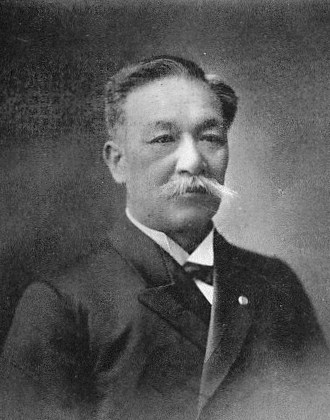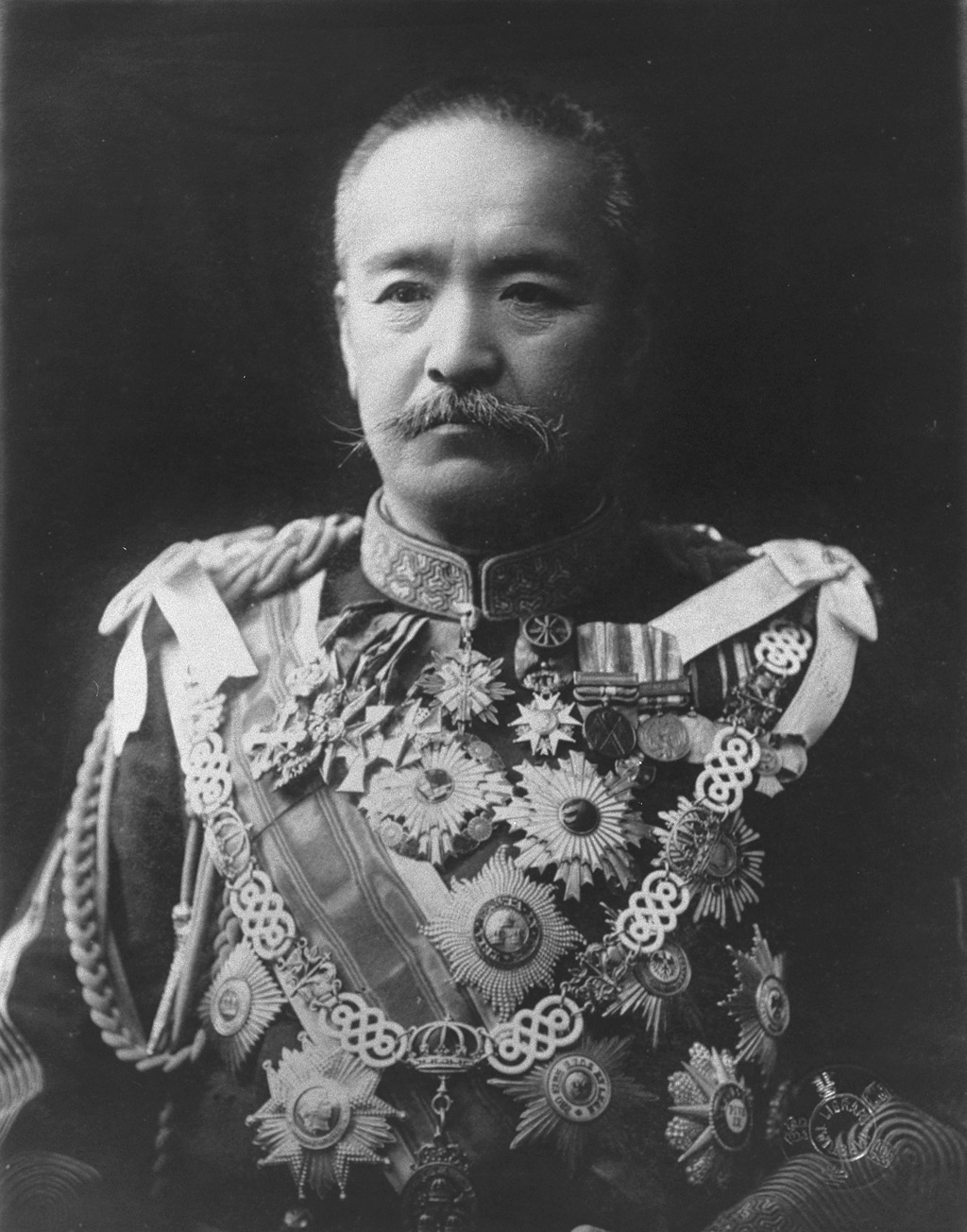|
Hatano Norinao
Hatano Norinao ( ja, 波多野敬直) (November 13, 1850 – August 29, 1922) was Grand Chamberlain of Japan (1912). He was born in Saga Prefecture. He was recipient of the Order of the Sacred Treasure (3rd class, 1899; 1st class, 1906), the Order of the Rising Sun (December 1, 1915) and the Victory Medal for World War I World War I (28 July 1914 11 November 1918), often abbreviated as WWI, was one of the deadliest global conflicts in history. Belligerents included much of Europe, the Russian Empire, the United States, and the Ottoman Empire, with fightin ... (November 10, 1915).『官報』第1310号・付録「辞令」1916年12月13日。 References Bibliography * 霞会館華族家系大成編輯委員会『平成新修旧華族家系大成』( 霞会館、1996年) * 衆議院・参議院編『議会制度七十年史』(大蔵省印刷局、1962年) External links波多野敬直経歴 {{DEFAULTSORT:Norinao, Hatano 1850 births 1922 deaths People fr ... [...More Info...] [...Related Items...] OR: [Wikipedia] [Google] [Baidu] |
Yoshinao Hatano
Yoshinao is a masculine Japanese given name. Possible writings Yoshinao can be written using different combinations of kanji characters. Here are some examples: *義直, "justice, frankness" *義尚, "justice, still" *佳直, "skilled, frankness" *佳尚, "skilled, still" *善直, "virtuous, frankness" *善尚, "virtuous, still" *吉直, "good luck, frankness" *吉尚, "good luck, still" *良直, "good, frankness" *良尚, "good, still" *恭直, "respectful, frankness" *嘉直, "excellent, frankness" *嘉尚, "excellent, still" *能直, "capacity, frankness" *喜直, "rejoice, frankness" The name can also be written in hiragana よしなお or katakana ヨシナオ. Notable people with the name * (born 1993), Japanese baseball player * (1918–2008), Japanese World War II flying ace * (1923–2000), Japanese composer * (1601–1650), Japanese ''daimyō were powerful Japanese magnates, feudal lords who, from the 10th century to the early Meiji period in the middle 19t ... [...More Info...] [...Related Items...] OR: [Wikipedia] [Google] [Baidu] |
Chamberlain Of Japan
The is a department of the Imperial Household Agency of Japan. History According to Taihō Code around the 8th century, it was presupposed that a chamberlain belonged to the Ministry of the Center. When the was installed during the Heian era, the chamberlain's role was quickly reduced, limited to matters of courtesy. In 1869, the chamberlain was brought within the Imperial Household Ministry. The position of Grand Chamberlain was placed within the merit system in 1871, and three people—Tokudaiji Sanetsune, Masataka Kawase, and Higashikuze Michitomi—were appointed. According to the Imperial Household Ministry regulations, the Grand Chamberlain supervises chamberlains who closely attend the appointed person, reports to that person and announces their orders. After World War II, the chamberlains were organized into the Board of the Chamberlains, within the Imperial Household Agency, through the temporary . After passage of the National Public Service Law (Shōwa 22 Law No. 12 ... [...More Info...] [...Related Items...] OR: [Wikipedia] [Google] [Baidu] |
Saga Prefecture
is a prefecture of Japan located on the island of Kyushu. Saga Prefecture has a population of 809,248 (1 August 2020) and has a geographic area of 2,440 km2 (942 sq mi). Saga Prefecture borders Fukuoka Prefecture to the northeast and Nagasaki Prefecture to the southwest. Saga is the capital and largest city of Saga Prefecture, with other major cities including Karatsu, Tosu, and Imari. Saga Prefecture is located in the northwest of Kyūshū covering an isthmus-like area extending between the Sea of Japan and the Ariake Sea. Saga Prefecture's western region is known for the production of ceramics and porcelain, particularly in the towns of Karatsu, Imari, and Arita. History In ancient times, the area composed by Nagasaki Prefecture and Saga Prefecture was called Hizen Province. The current name dates from the Meiji Restoration. Rice farming culture has prospered here since ancient times, and vestiges can be seen at the ruins of Nabatake in Karatsu and the Yoshinogari sit ... [...More Info...] [...Related Items...] OR: [Wikipedia] [Google] [Baidu] |
Order Of The Sacred Treasure
The is a Japanese order, established on 4 January 1888 by Emperor Meiji as the Order of Meiji. Originally awarded in eight classes (from 8th to 1st, in ascending order of importance), since 2003 it has been awarded in six classes, the lowest two medals being abolished that year. Originally a male-only decoration, the order has been made available to women since 1919. The Order of the Sacred Treasure, which had 8 ranks until 2003, was awarded as a slightly lower rank than the Order of the Rising Sun for men and the Order of the Precious Crown for women. For example, the 1st class of the Order of the Sacred Treasure has been treated as between the 1st class and the 2nd class of the Order of the Rising Sun and the Order of the Precious Crown, and the 2nd class of the Order of the Sacred Treasure has been treated as between the 2nd class and the 3rd class of the Order of the Rising Sun and the Order of the Precious Crown. [...More Info...] [...Related Items...] OR: [Wikipedia] [Google] [Baidu] |
Order Of The Rising Sun
The is a Japanese order, established in 1875 by Emperor Meiji. The Order was the first national decoration awarded by the Japanese government, created on 10 April 1875 by decree of the Council of State. The badge features rays of sunlight from the rising sun. The design of the Rising Sun symbolizes energy as powerful as the rising sunEmbassy of Japan in Australia in parallel with the "rising sun" concept of Japan ("Land of the Rising Sun"). The Order of the Rising Sun is awarded to people who have rendered distinguished service to the state in various fields except military service. Since there is no order for military achievements under the current Japanese system, [...More Info...] [...Related Items...] OR: [Wikipedia] [Google] [Baidu] |
Victory Medal (Japan)
The Victory Medal was a commemorative military medal of Japan awarded to mark service during the First World War. Established by Imperial Edict #406 on 17 September 1920, it was one of the series of Victory Medals created and awarded by the victorious allies after the First World War. Fifteen nations in all issued a version of the medal. All shared the rainbow suspension and service ribbon, but the medals' designs varied by country. Japan's design was different from all other versions as it did not depict the goddess Victory. This figure from Roman mythology would have no connection to Japanese culture, so a depiction of Takemikazuchi, the war god in Japanese mythology occupies the obverse of the medal. Edict No. 406 "Official Gazette". September 17, 1920 See also * Japanese intervention in Siberia The of 1918–1922 was the dispatch of Japanese military forces to the Russian Maritime Provinces as part of a larger effort by western powers and Japan to support White Russ ... [...More Info...] [...Related Items...] OR: [Wikipedia] [Google] [Baidu] |
World War I
World War I (28 July 1914 11 November 1918), often abbreviated as WWI, was one of the deadliest global conflicts in history. Belligerents included much of Europe, the Russian Empire, the United States, and the Ottoman Empire, with fighting occurring throughout Europe, the Middle East, Africa, the Pacific, and parts of Asia. An estimated 9 million soldiers were killed in combat, plus another 23 million wounded, while 5 million civilians died as a result of military action, hunger, and disease. Millions more died in genocides within the Ottoman Empire and in the 1918 influenza pandemic, which was exacerbated by the movement of combatants during the war. Prior to 1914, the European great powers were divided between the Triple Entente (comprising France, Russia, and Britain) and the Triple Alliance (containing Germany, Austria-Hungary, and Italy). Tensions in the Balkans came to a head on 28 June 1914, following the assassination of Archduke Franz Ferdin ... [...More Info...] [...Related Items...] OR: [Wikipedia] [Google] [Baidu] |
Tokudaiji Sanetsune
''With information translated from the Japanese Wikipedia article'' Duke was a Japanese statesman and Lord Keeper of the Privy Seal of Japan in the Meiji era. Life Tokydaiji Sanetsune was born to a branch of the Fujiwara court nobility in Kyoto. His father was Tokudaiji Kin'ito, and his brother was Saionji Kinmochi, later Prime Minister of Japan. Joining the ''sonnō jōi'' ("Revere the Emperor, Expel the Barbarian") faction in Court against westernization and the Tokugawa shogunate, he was forced to flee Kyoto during the coup d'état by the moderate ''samurai'' of the Aizu and Satsuma domains on 18 August 1863. He returned after the Meiji Restoration and served in a number of posts in the new government. He became a ''Dainagon'' in 1869. In 1884, he was given the title of ''koshaku'' (marquis) under the new ''kazoku'' nobility rankings, and was subsequently elevated to ''koshaku'' (prince). In 1891 he became Lord Keeper of the Privy Seal of Japan a post he held until Empe ... [...More Info...] [...Related Items...] OR: [Wikipedia] [Google] [Baidu] |
Katsura Tarō
Prince was a Japanese politician and general of the Imperial Japanese Army who served as the Prime Minister of Japan from 1901 to 1906, from 1908 to 1911, and from 1912 to 1913. Katsura was a distinguished general of the First Sino-Japanese War and a ''genrō'' of the Meiji government who served as Governor-General of Taiwan and Minister of War. Katsura was appointed Prime Minister in 1901 as a military candidate and positioned himself as a conservative outside party politics. Katsura's first and second premierships oversaw several major events in modern Japanese history, including the Russo-Japanese War and the annexation of Korea. Katsura's third premiership triggered the Taisho Political Crisis, and he resigned three months later after a vote of no confidence. Katsura is the second-longest serving Prime Minister of Japan, after Shinzō Abe, and served for 2883 days over his three terms from 1901 to 1913. Early life Katsura was born on 4 January 1848 in Hagi, Nagato Prov ... [...More Info...] [...Related Items...] OR: [Wikipedia] [Google] [Baidu] |
1850 Births
Year 185 ( CLXXXV) was a common year starting on Friday (link will display the full calendar) of the Julian calendar. At the time, it was known as the Year of the Consulship of Lascivius and Atilius (or, less frequently, year 938 ''Ab urbe condita''). The denomination 185 for this year has been used since the early medieval period, when the Anno Domini calendar era became the prevalent method in Europe for naming years. Events By place Roman Empire * Nobles of Britain demand that Emperor Commodus rescind all power given to Tigidius Perennis, who is eventually executed. * Publius Helvius Pertinax is made governor of Britain and quells a mutiny of the British Roman legions who wanted him to become emperor. The disgruntled usurpers go on to attempt to assassinate the governor. * Tigidius Perennis, his family and many others are executed for conspiring against Commodus. * Commodus drains Rome's treasury to put on gladiatorial spectacles and confiscates property to suppo ... [...More Info...] [...Related Items...] OR: [Wikipedia] [Google] [Baidu] |
1922 Deaths
Nineteen or 19 may refer to: * 19 (number), the natural number following 18 and preceding 20 * one of the years 19 BC, AD 19, 1919, 2019 Films * ''19'' (film), a 2001 Japanese film * ''Nineteen'' (film), a 1987 science fiction film Music * 19 (band), a Japanese pop music duo Albums * ''19'' (Adele album), 2008 * ''19'', a 2003 album by Alsou * ''19'', a 2006 album by Evan Yo * ''19'', a 2018 album by MHD * ''19'', one half of the double album ''63/19'' by Kool A.D. * ''Number Nineteen'', a 1971 album by American jazz pianist Mal Waldron * ''XIX'' (EP), a 2019 EP by 1the9 Songs * "19" (song), a 1985 song by British musician Paul Hardcastle. * "Nineteen", a song by Bad4Good from the 1992 album '' Refugee'' * "Nineteen", a song by Karma to Burn from the 2001 album ''Almost Heathen''. * "Nineteen" (song), a 2007 song by American singer Billy Ray Cyrus. * "Nineteen", a song by Tegan and Sara from the 2007 album '' The Con''. * "XIX" (song), a 2014 song by Slipk ... [...More Info...] [...Related Items...] OR: [Wikipedia] [Google] [Baidu] |




.jpg)
